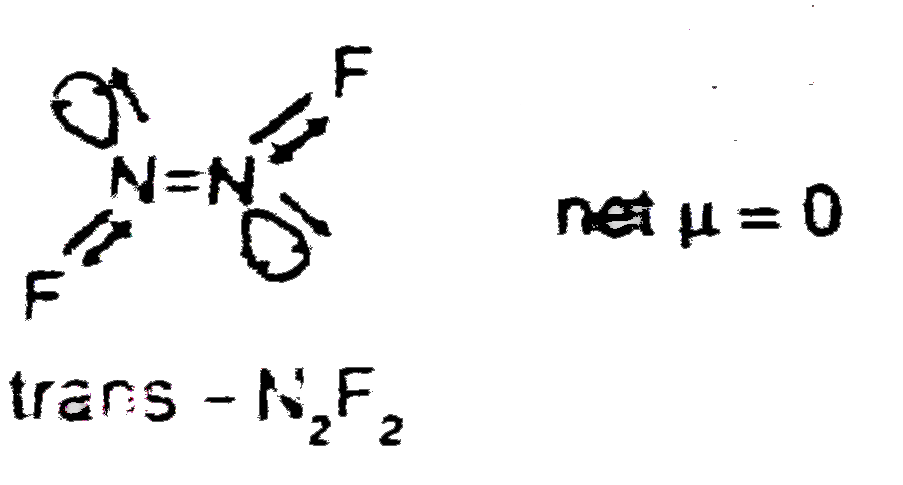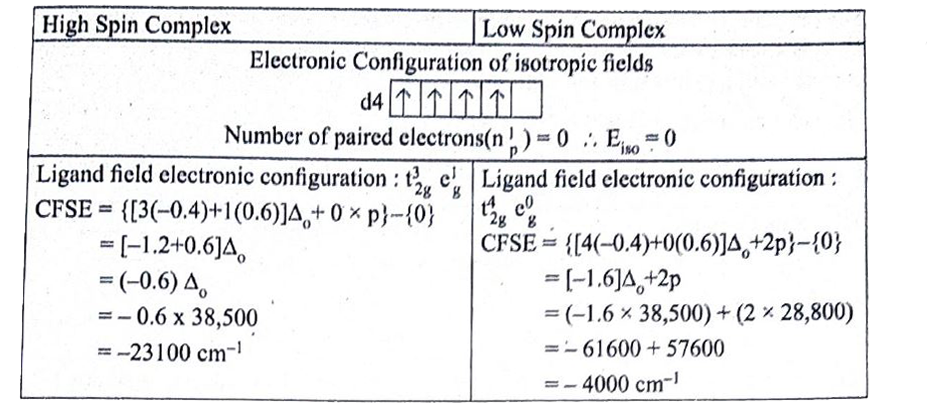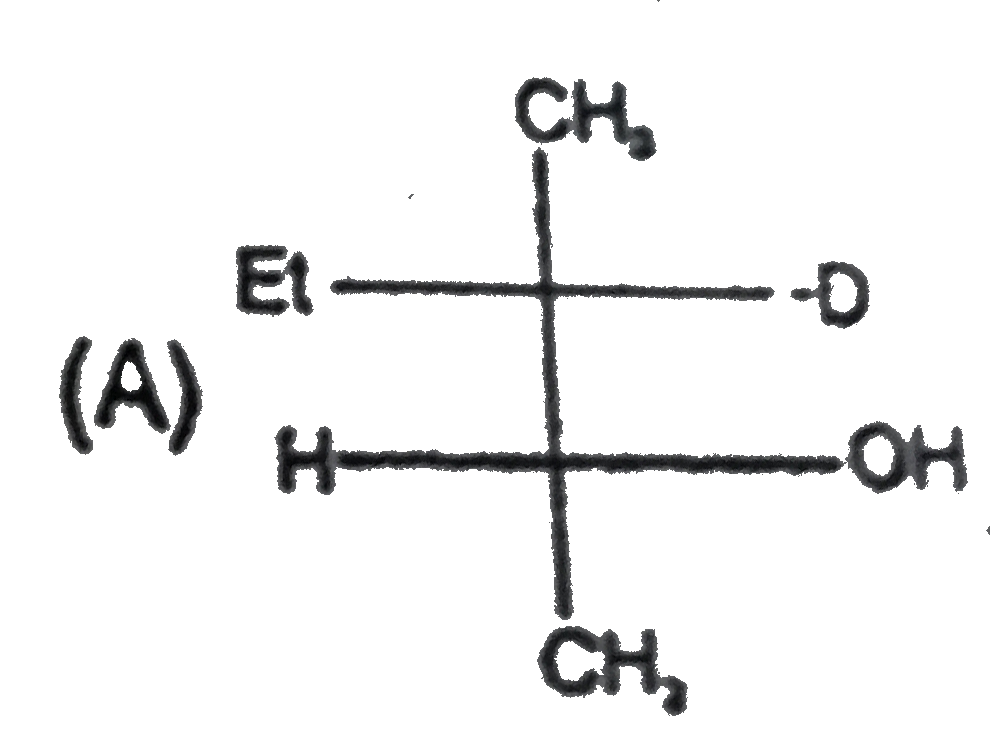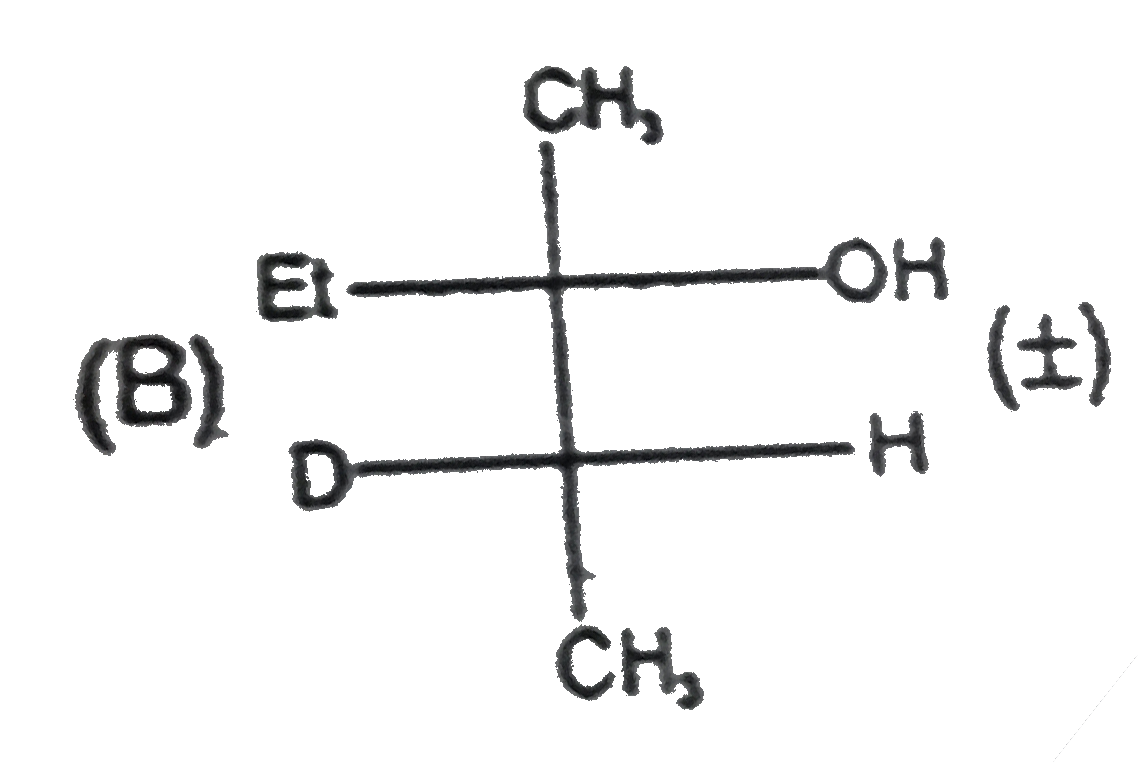Explore topic-wise InterviewSolutions in .
This section includes InterviewSolutions, each offering curated multiple-choice questions to sharpen your knowledge and support exam preparation. Choose a topic below to get started.
| 28101. |
The most common oxidation state of lanthanoids are : |
| Answer» SOLUTION :is the CORRECTANSWER | |
| 28102. |
The measured freezing point depresion for a 0.1 m aqueous CH_(3)COOH solution is 0.19 ""^(@C). The acid dissociation constant, K_(a) at this concentration will be (Given K_f, the molal cryoscopic constant = 1.86 K kg mol^(-1)) |
|
Answer» `4.76 xx 10^(-5)` ` i = (0.19)/(1.86 xx 0.1) = 1.02` `alpha = (i-1)/(n-1) = (0.02)/(1) = 2 xx 10^(-2)` `K_(a) = C alpha^(2) =1 xx 10^(1-) xx(2 xx 10^(-2))^(2) = 4 xx 10^(-5)` |
|
| 28103. |
The most common oxidation state of an element is -2. The number of electrons present in its outer most shell is: |
|
Answer» 2 |
|
| 28104. |
The measure of net molecular polarity is a quantity called dipole moment which is defined as the magnitude of the charge Q at either end of the molecular dipole times the distance 'r' between the charge : mu=Qxxr Molecular polarities give rise to some of the forces that occur between molecules.Such forces are termed as intermolecular forces.These molecular forces are of several different types including dipole-dipole forces, London dispersion forces, hydrogen bonds and ion-dipole forces (operate between ions and molecules).These intermolecular forces are electrical in origin and results from the mutual attraction of unlike charges or the mutual repulsion of like charges. A formal positive charge on the central atom affect the size of orbitals.A formal positive charge on central atom will pull in all electrons towards the nucleus and this will leads to the contraction in size of orbitals. Which of the following molecule does not have dipole moment ? |
|
Answer» `TRANS - N_2F_2` 
|
|
| 28105. |
The mean pairing energy and octahedral field splitting energy of [Mn(CN)_(6)]^(3-) are 28,800cm^(-1) and 38500cm^(-1) respectively. Whether this complex is stable in low spin or high spin? |
|
Answer» Solution :Mean pairing ENERGY `=28,800cm^(-1)` OCTAHEDRAL FIELD splitting energy `=38500cm^(-1)` `[Mn(CN)_(6)]^(3-) Mn=3d^(5)4s^(2)M_(n)^(3+)=3d^(4)` 
|
|
| 28106. |
The most common oxidation state of actinoids is |
|
Answer» 2 |
|
| 28108. |
The mean pairing energy and octahedral field splitting energy of[Mn(CN)_]^(3-)are 28,800 cm ^(-1)and 38500cm ^(-1)respectively Whether this complex is stable in low spin or high spin? |
|
Answer» Solution :(i). The complex has octahedral shape. (II). ` CN^(-) ` is strong -field LIGAND (iii) The d-electronic configuration of Mn is `d^(5)` (iv) The splitting energy is large ` therefore ` The complex is stable in LOW spin. |
|
| 28109. |
The mean free path of a gas at 1 atm pressure is l. Its mean free path at 5 atm pressure will be |
| Answer» Solution :Mean free PATH, `l PROP ( 1)/( p )` | |
| 28111. |
The mean free path (lambda) of a gas sample is given by : |
|
Answer» `LAMBDA` = sqrt2pisigma^2N` |
|
| 28112. |
The most common noble gas obtained in the radioactive decay is |
|
Answer» He |
|
| 28115. |
The maximum work that can be derived from a chemical reaction is |
|
Answer» `W_(MAX)=DELTAH` |
|
| 28116. |
The most common constituent of steel is : |
|
Answer» C |
|
| 28117. |
The maximum work obtained by an isothermal reversible expansion of 1 mol of an ideal gas at 27^(@)C from 2.24 to 22.4L is (R = 2 cal) |
|
Answer» 1381.8 cal `= 1 XX 2 xx 300 x 2.303 "LOG" (22.4)/(2.4)` `= 1381.8 cal` |
|
| 28118. |
The maximum work obtainable from a reversible process is given as |
|
Answer» `-DELTAA` |
|
| 28119. |
The most common mineral containing lanthanoids is "…................". |
|
Answer» |
|
| 28120. |
The maximum wavelength of radiation that can ionize a sodium atom is 2414 A the ionization energy of sodium per moleshall be |
|
Answer» `241.4 J MOL^(-1)` |
|
| 28121. |
The most common chemical method to perserve fishes is |
|
Answer» dehydration |
|
| 28122. |
The maximum work done in expanding 16 g oxygen at 300K and occupying a volume of 5 dm^3 isothermally until the volume become 25 dm^3 is: |
|
Answer» `2.01X10^3 J` |
|
| 28123. |
The most common cations in biological systems are : |
|
Answer» `NA^(+)andMg^(2+)` |
|
| 28124. |
The maximum wavelength of light that can excite an electron from first to third orbit of hydrogen atom is: |
|
Answer» 487 nm |
|
| 28126. |
The maximum valency of halogen group with respect to oxygen is |
|
Answer» 1 |
|
| 28129. |
The most basic hydroxide from following is |
|
Answer» `Pr(OH)_(3)(Z=59)` As a result, covalent nature of Ln - OH bond also increases. Thus the most basic hydroxide among the gicen option is `La(OH)_(3)`. |
|
| 28130. |
The maximum valency (8) is shown by |
|
Answer» XE and OS only |
|
| 28131. |
The maximum tendency to form the uni positive ion is for the element with configuration. |
|
Answer» `1s^(2)2S^(2)2p^(6)3s^(2)` |
|
| 28132. |
The maximum stabilization energy is associated with ….... |
|
Answer»
|
|
| 28133. |
The maximum sum of the number of neutrons and protons in an isotope of hydrogen is: |
|
Answer» 6 |
|
| 28134. |
The most basic compounds in the following is |
|
Answer» <P>Benzylamine |
|
| 28135. |
The maximum ra dius of sphere that can be fitted in the octahedral hole of cubicalclosed packing of sphere of raius r is |
|
Answer» 0.732I |
|
| 28136. |
The most basic compound amonst the following is |
|
Answer» Benzylamine  or benzyl amine (A) is most BASIC AMONG the given COMPOUNDS. or benzyl amine (A) is most BASIC AMONG the given COMPOUNDS.
|
|
| 28137. |
The most basic compound among the following is |
|
Answer» `C_2H_5NH_2` |
|
| 28138. |
The maximum proportion of available volume that can be filled by hard spheres in diamond is: |
|
Answer» 0.52 |
|
| 28139. |
The maximum probability of finding electron in the d_(yz) orbital is : |
|
Answer» Along the y-AXIS |
|
| 28140. |
The maximum probability of finding electron in d_(xy) orbital is, |
|
Answer» ALONG the X axis |
|
| 28141. |
The most appropriate reagent to distinguish an aldehyde from a ketone is : |
|
Answer» AMMONIACAL `AgNO_3` |
|
| 28142. |
The maximum prescribed concentration of cadmium in drinkingwater in ppm is |
|
Answer» 0.05 |
|
| 28143. |
The most appropriate reagent to convert RCOOEt to RCH_(2)OH |
|
Answer» `LiAlH_(4)` |
|
| 28144. |
The most appropriate reagent for the conversion of 2-pentanone to butanoic acid is |
|
Answer» SODIUM hypoiodite |
|
| 28145. |
The most appropriate name for zero group elements |
| Answer» Answer :A | |
| 28146. |
The most appropriate major product of the following sequence of reactions would be. overset(CH_3-oversetoverset(O)(||)C-O-O-H)tooverset(LiAID_4)tooverset(H_3O^+)to |
|
Answer»

|
|
| 28147. |
The maximum oxidation state that can be exhibited by a halogen in its second excited state |
| Answer» ANSWER :C | |
| 28148. |
The most adverse effect of radioactive pollutants |
|
Answer» Gene MUTATION |
|
| 28149. |
The most adsorbed gas on activated chrocal is |
|
Answer» `N_(2)` |
|






